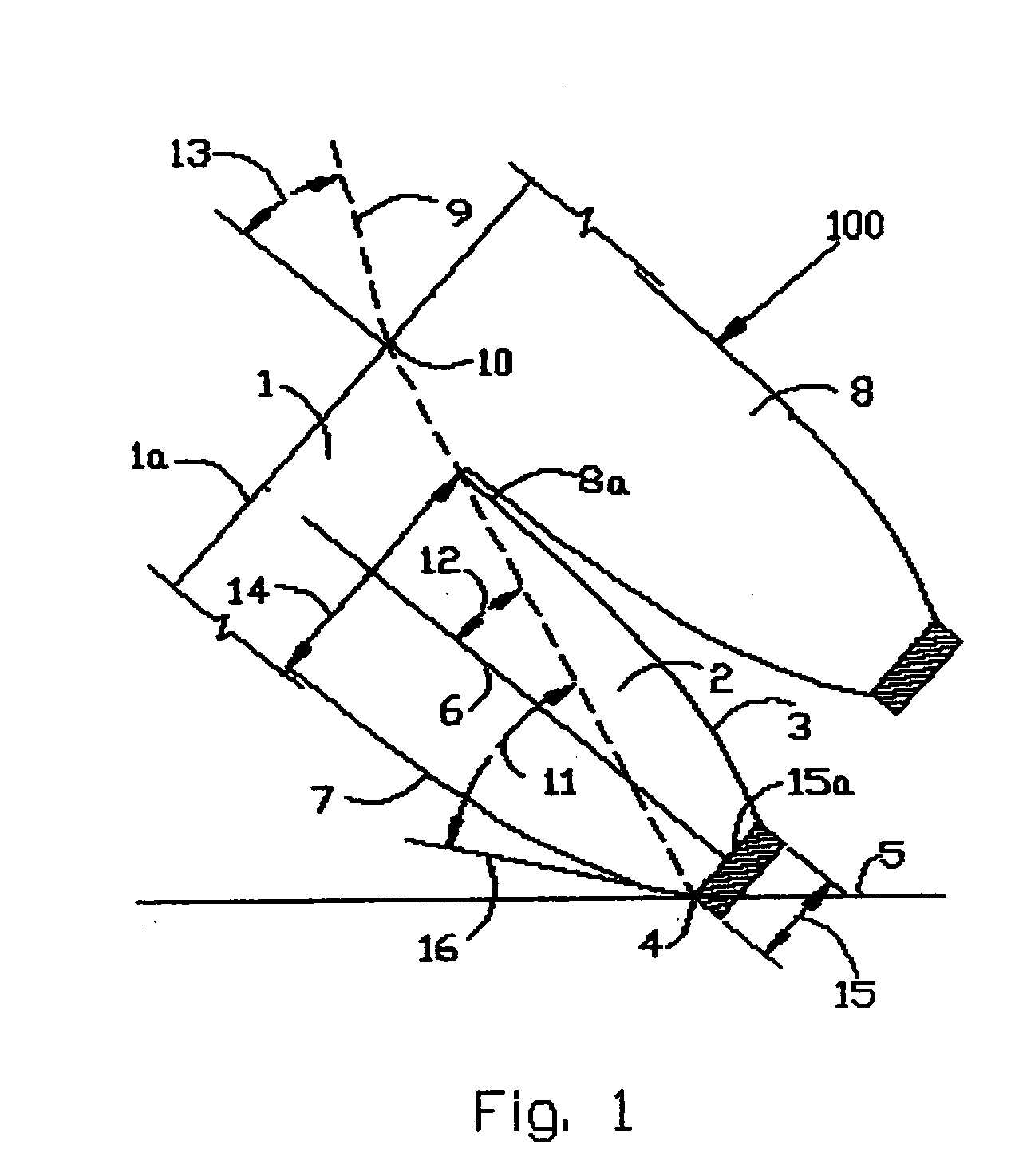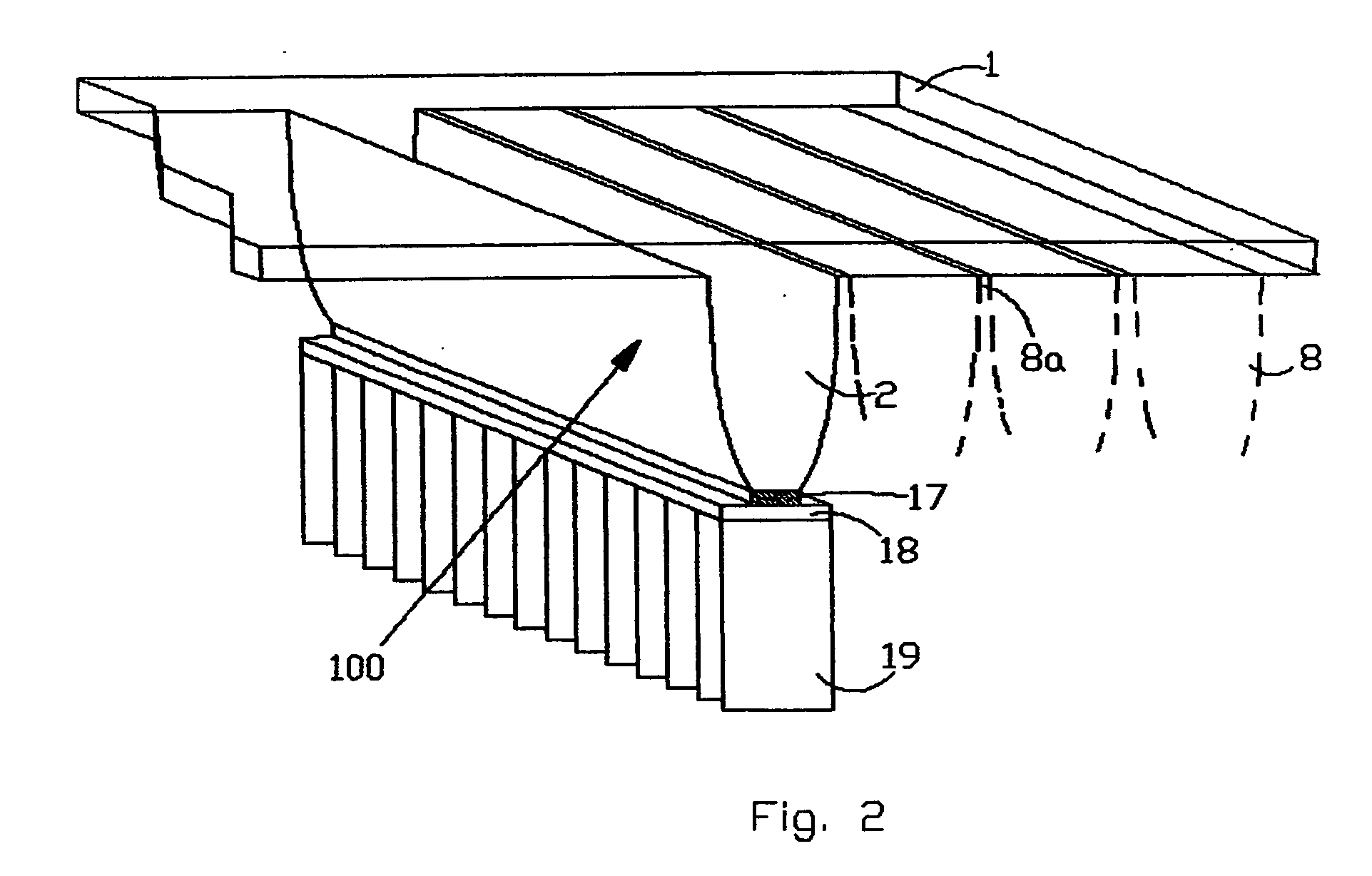Concentrating solar roofing shingle
a solar and concentrating technology, applied in thermal-pv hybrid energy generation, instruments, lighting and heating apparatuses, etc., can solve the problems of many prior art devices and systems, inability to take advantage of diffuse or scattered solar radiation, and high cost and reliability of tracking mechanisms of these prior art devices, so as to reduce the amount of relatively expensive photovoltaic materials. , the effect of dispersing excess heat into the air spa
- Summary
- Abstract
- Description
- Claims
- Application Information
AI Technical Summary
Benefits of technology
Problems solved by technology
Method used
Image
Examples
Embodiment Construction
[0054] Referring to the drawings, FIG. 1 shows a section through a portion of a solar concentrating roofing shingle 100 in accordance with one embodiment of the present invention. For illustration, FIG. 1 shows two integrally-formed parabolic concentrating structures side-by-side. For purposes of example, the shingle 100 of FIG. 1 may be constructed of transparent acrylic material, although it could also be constructed of other plastic materials or glass. The embodiment of FIG. 1 is for two-dimensional concentration of light onto a photovoltaic absorber. A three-dimensional solar concentrating shingle in accordance with another embodiment of the present invention will be described in connection with subsequent drawings.
[0055] The upper glazing 1 of the concentrating shingle 100 is a continuous sheet of a substantially sunlight-transparent material that serves to protect the lower component of the shingle from the weather and to serve as a supporting structure for an integrally-form...
PUM
 Login to View More
Login to View More Abstract
Description
Claims
Application Information
 Login to View More
Login to View More - R&D
- Intellectual Property
- Life Sciences
- Materials
- Tech Scout
- Unparalleled Data Quality
- Higher Quality Content
- 60% Fewer Hallucinations
Browse by: Latest US Patents, China's latest patents, Technical Efficacy Thesaurus, Application Domain, Technology Topic, Popular Technical Reports.
© 2025 PatSnap. All rights reserved.Legal|Privacy policy|Modern Slavery Act Transparency Statement|Sitemap|About US| Contact US: help@patsnap.com



